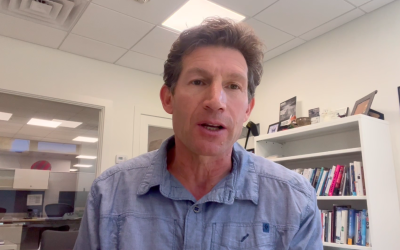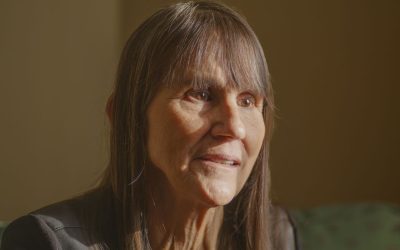With the widespread emergence of digital technology, consumer engagement is important and valuable. The private sector has rapidly embraced consumer engagement, yet destination marketing organizations (DMOs) have been much slower to respond. What’s holding back DMOs from transforming their activities?
Here are 8 roadblocks standing in your way and the solutions you need to consider in order to move beyond them.
1. You need new skills
Many destination marketers are highly skilled at brand development and advertising. Briefing agencies and evaluating creative concepts, ensuring that tone of voice and design standards are on brand, creative testing, media strategy, preparing high-profile campaigns etc. are included in the type of skills honed over years of practice. This experience helps ensure that once a campaign goes live, all of the possible things that could go wrong have been eliminated, in order to protect your investment. In many cases, DMOs are built around a culture of perfecting the advertising message. But digital allows for constant conversation and constant testing and refinement. In fact, that’s exactly what you should do: test based on data. This requires an entirely new set of skills.
What you should do: Hire for new areas of expertise or properly invest in training your existing staff. It’s ineffective to bring old skills over to new digital communication platforms. The techniques and ways you measure success are entirely different. Management needs to take steps to shift toward a culture that allows people to take risks and learn. With digital, it’s ok to make mistakes and learn from them. Often speed is more important than perfection. It’s not like a magazine article that’s gone to press; if you need to change some copy, it only takes a few minutes. Have people on your team who challenge the status quo and help the entire organization find more effective ways of achieving its goals. Some of the best social/digital/content marketers that we’ve seen have become integral to the organization. They’ve also become indispensable because they challenge their organization’s thinking all the way up to the executive and board level. And while you’re doing this, take your stakeholders along on the journey, too. Invite their input and help them understand why you need to innovate and iterate, so that they give you room to learn in this new world.
2. Learning to let go of control
Now that everyone has an iPhone and a Facebook account, it’s impossible to control what people hear or say about your brand. Your destination’s brand voice is just one of many sources of information a person may rely on when they’re planning travel. Accepting this means letting go of the tight control you have over your brand. Holding on too tightly means that your marketing will be perceived as inauthentic and your communications will be quickly rendered ineffective. It’s not always easy, however; shifting this mindset can be very difficult for destination marketers whose careers were shaped by years of brand advertising experience.
What you should do: The brand you promote needs to originate from your destination’s DNA. When determining brand positioning, the truth is the most important foundation. If there are problems with the experiences that your destination offers, start by fixing those. Some DMO roles are purely focused around promotion; if so, you may need to rethink and lobby to expand your mandate. When you communicate to visitors, understand what residents, industry and visitors say about the experience your destination offers, then amplify the stories that align with your intended brand positioning. Most importantly, include stakeholders in your process. Stakeholders must be allowed to provide input into your destination’s DNA and have a voice at the branding table for the brand voice to be truthful.
3. Consumer engagement is seemingly never-ending
Success in social media, content marketing and many forms of digital marketing is often hindered by confusion around “when is enough, enough?”. Traditional advertising campaigns often have a very neat beginning, middle and end. There’s something nice and tidy about them. Conversations with people across digital channels, however, are always-on – 24 hours a day, 365 days a year. Visitors don’t take a break at night or on weekends; in fact, that’s when they have time to do their travel planning.
What you should do: To avoid the pitfalls associated with a seemingly never-ending task, make sure you clearly define what success looks like. Create performance metrics that tie in directly to business objectives. Set targets that are concrete. It’s not enough to say “grow our email database and engagement” because it doesn’t give clear direction to the people managing your communications. Define goals together that set them free. This will be highly motivating for your team. Doing so will help them quickly answer the question “what does success look like?”.
4. Limiting your target markets
Traditional media strategies typically focus on segmenting target markets by geography and broad demographics. You can run billboards in specific cities or TV ads in specific regions at times that are likely to attract a higher percentage of views from a particular age, behaviour or income level. Yet digital tools offer an insane amount of targeting power. You can now run ads directed at a very specific user. You could target the 16,000 US residents who have expressed an interest in “warp knitting” (Google it – it’s a thing). Or you could target the approximately 1,700 Estonians who love kiteboarding with a specific message about a related event. All of these different targeting options require different messages. So you can see that quite quickly, effective marketing becomes very complex. With interest and behavioural targeting, geographic targeting becomes less important, especially with the increasing competition and choice people now have around travel opportunities.
What you should do: Create a very sophisticated strategy that provides focus for your marketing team. Start with a top-level marketing strategy, then cascade down to very specific experiences you want to promote and target markets that you want to reach. Your content and creative should speak to very specific audiences, which means you need to be nimble with production and flexible with your brand. The metrics that you choose to measure should focus your investments on very specific, effective interactions.
5. Not conveying value to stakeholders
When you create a television ad or brochure, it’s easy to put that in front of stakeholders and say, “here, look what we produced”. There’s instant and apparent value. Effective digital marketing is, by its nature, not targeted to people in your destination. So they’re not going to see your online ads, and unless they’re on your fan page every day, they won’t see the thousands of powerful interactions you have with potential travelers. They won’t see the treasure trove of data in Google Analytics or how your email database spiked last week. Digital is invisible and many people still don’t understand it. It’s even trickier to measure and convey the value of your investments around developing your destination experiences in order to improve word-of-mouth sentiment.
What you should do: Educate your board or industry around consumer trends and digital marketing techniques. Create campaigns that also help to educate the industry through participation. In consumer engagement, your success as a destination actually depends on your stakeholders’ success. Work with the shining stars first so that their energy inspires other partners to join. It’s more important than ever to create a bomb-proof marketing strategy that key stakeholders understand. Clearly show your objectives, what you’re going to invest in, and how you’ll measure success. Also: heavily involve your stakeholders in customer journey mapping exercises as you build your plan. They are on the frontlines and know your destination’s customers better than you. The end result of this sort of collaboration is that you will have permission to focus on your tasks, and won’t have to react to every stakeholder’s demand. Choose simple metrics that are right for each of your target markets (like repeat visitation or results from Net Promoter Score) and can easily be linked back to return on investment, so that your entire destination can rally together.
6. Allowing a higher level of scrutiny for investments in social and digital marketing
Investments in social media (and, often, digital media) tend to attract more scrutiny than traditional advertising. There’s no rationale for this, but we see it happening everywhere. Destination marketers sometimes provoke scepticism toward digital efforts when they try at all costs to become the first to adopt a new technology. They imagine the PR value of a glamorous headline that reads “[Destination X]: The first DMO to reach people with [insert new fad here].” Don’t fall into this trap. Every time you do this without clearly linking back to the strategy that leadership and stakeholders are invested in, you risk your credibility.
What you should do: Take time to educate stakeholders. Do your own PR for what would otherwise be perceived as “invisible marketing” to the public. Ensure that everyone is invested into a plan that outlines how you’re allocating your time and budget, making sure that the plan allows room for experimentation. Innovation should be part of your budget. Share anecdotal wins with the organization, stakeholders, the board and others so people can see the power of the interactions you’re having, and the impact they have on travellers, trade and media. Then, share the data to support how those anecdotes are happening at scale. Find ways to measure your success by clearly correlating your investments with business outcomes – the Potential on Investment study is a good example. If you can, find other ways to compare investments in traditional media with investments in consumer engagement.
7. Your team is spread too thin
Many destination marketers keep piling new tasks and activities on their teams without taking any away. The most important things often become side-of-desk, and little regard is paid to adding skills to the team or implementing change management. Activities are often less effective than they could be because people are spread very thin.
What you should do: Ensure that planning focuses on the highest-priority opportunities. Assess all of your potential initiatives to decide what you’re going to stop doing as you add new initiatives. Be as clear as a company about what you’re not going to do, as much as what you are.
8. Operating in a highly visible environment doesn’t encourage risk taking
Everything that a tourism board does comes under scrutiny from residents, media, stakeholders, politicians or staff. If you make a tiny mistake in communications, it can cause days of crisis management. Innovation requires a tolerance for risk of failure, but risk isn’t encouraged in many destination marketing organizations. This is a hangover from an era of traditional communications, but it has a massive impact on the culture at many tourism boards around the world. It’s one of the most important roadblocks to overcome. Empower everyone to be ambassadors for your destination and remove many of the bottlenecks that prevent you from scaling your consumer engagement across the organization.
What you should do: Build a culture that encourages “failing forward”. Test tactics that align with your overall strategy. See what works and invest more budget when you find success. We work with many tourism boards that have set aside a specific percentage of their budget as an “innovation budget” to try things and learn from them. Celebrate learning of all kinds. Share your learning with industry so members can benefit from your mistakes and successes. And at the risk of sounding like a broken record: bring industry along for the ride as you experiment in this new world.
As our industry goes through a dramatic transformation, it’s important that we learn from each other. Have you experienced any of these or other challenges? Do you have any advice for your counterparts seeking to overcome them?
Struggling to overcome these obstacles? Destination Think helps DMOs stay relevant in the modern marketing world by developing and implementing strategies that draw from our global experience. Contact us today to find out how we can help.
Featured image credit: E01, Flickr









0 Comments